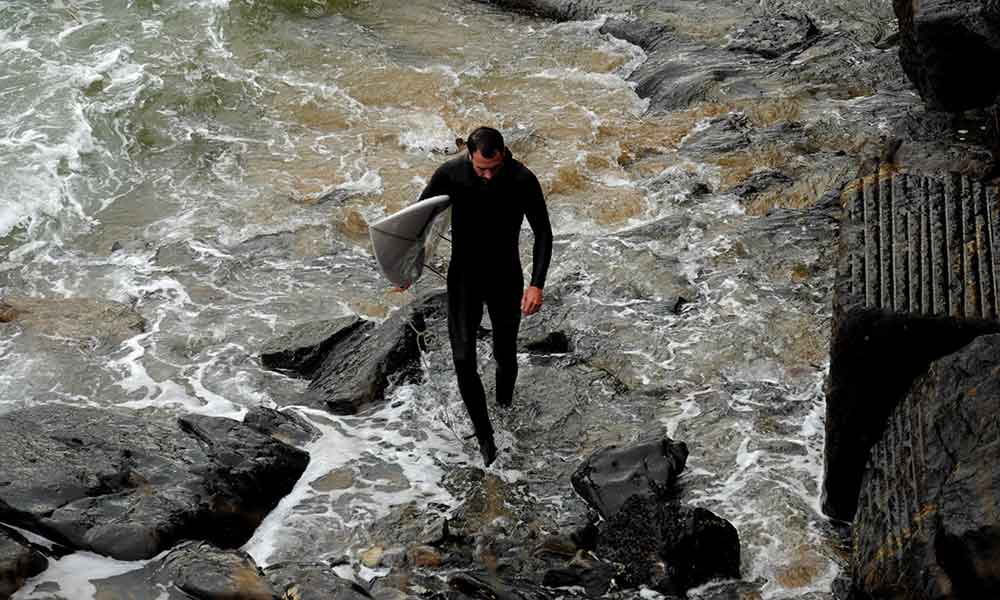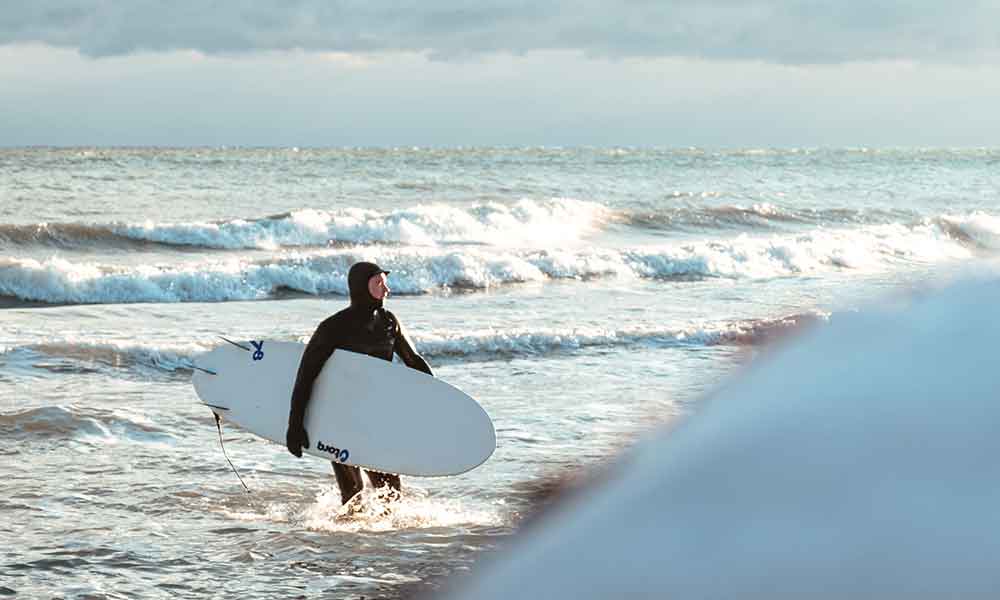Surfers are usually very environmentally conscious.
Many organizations devoted to marine conservation and plastic reduction were founded by surfers and their thalassophilic nature means they are usually keen to keep the oceans clean.
But surfing can be very bad for the environment and wetsuits are a great example of this.
Fortunately, though, neoprene wetsuits are not the only option and there are many great eco-friendly wetsuits on the market.
Are Wetsuits Bad for the Environment?
Most wetsuits are made from neoprene, a type of synthetic rubber that is also known as polychloroprene.
A lot of neoprene is derived from oil and it is incredibly bad for the environment.
In fact, many manufacturing plants have reported higher rates of cancers and other health conditions in the surrounding areas.
Californian Proposition 65 also includes chloroprene on its list of carcinogens, which is why many neoprene wetsuits contain a warning that the product may cause cancer.
Neoprene is an incredibly effective material.
It’s water-resistant and insulating, making it perfect for use in wetsuits.
But as these warnings prove, it’s not without its issues.
What Do Eco-Friendly Wetsuits Contain?
It’s not easy to make an eco-friendly wetsuit.
They can’t just throw some fancy-sounding sustainable materials together and then stick a hefty price tag on top.
The wetsuit still needs to be comfortable, stretchable, warm, breathable, and water-resistant—those things are not easy to come by.
After all, if the eco-friendly option isn’t as effective as the non-eco-friendly one, no one will be convinced to make the switch.
As a result, there are very few good eco wetsuits on the market.
The ones that do exist will typically include all of the following features:
Limestone Neoprene
Although a lot of neoprene is derived from oil, it can also be derived from limestone.
In the case of Sooruz, they use a material known as Oysterprene, which actually comes from crushed oyster shells.
Although it’s still neoprene, it doesn’t support the oil industry and isn’t manufactured in such problematic conditions.
Natural Rubber
Natural rubber foam comes from rubber trees (Hevea brasiliensis) and can be sustainably sourced.
More importantly, it has a very low impact on the environment.
Interestingly, the whole reason that synthetic rubber exists is that natural rubber was hard to come by.
Synthetic versions were considered to be better, cheaper, and more versatile.
But as we now understand how damaging they can be, the world is gradually switching back to natural rubber.
Smarter Manufacturing
By using glues that are completely solvent-free, avoiding harmful chemicals, and focusing on a cleaner manufacturing process, brands can create wetsuits that are much less damaging than conventional neoprene.
Recycled Materials
Some brands are using recycled plastic bottles, recycled polyester, and other recycled materials to create wetsuits that take junk out of the environment.
The Best Eco-Friendly Wetsuits
If you are worried about the damage caused by neoprene wetsuits and are looking for an eco-friendly alternative, check out the following options.
The Vissla Eco-Seas Wetsuit
The Vissla Eco-Seas wetsuit was designed with eco-friendly materials, including natural rubber, water-based glues, and recycled plastic bottles.
It sounds like an odd mix, but it really works and the Eco-Seas Wetsuit is comfortable, flexible, and completely water-resistant.
The Eco-Seas Wetsuit is available for less than $250 and you can learn more from the brand’s website.
Patagonia R3 Yulex
The Yulex is a neoprene-free wetsuit made from a blend of natural rubber and synthetic rubber.
It’s Fair Trade Certified, chlorine-free, and incredibly high-quality.
It’s durable, watertight, and backed by one of the best outdoor and extreme sports brands around.
Of course, it’s also expensive, and you’ll need around $500 in your budget for this neoprene-free wetsuit.
It’s worth it, but for some surfers, it won’t be a viable option.
You can buy the R3 Yulex from the Patagonia website. You’ll also find a variety of other surfer gear made from similar eco-friendly materials.
Sooruz Eco-Friendly Wetsuits
Sooruz makes wetsuits from limestone neoprene as well as Oysterprene, a type of foam made from oyster shell powder.
There are a few different options available and you can find details on the Sooruz website.







